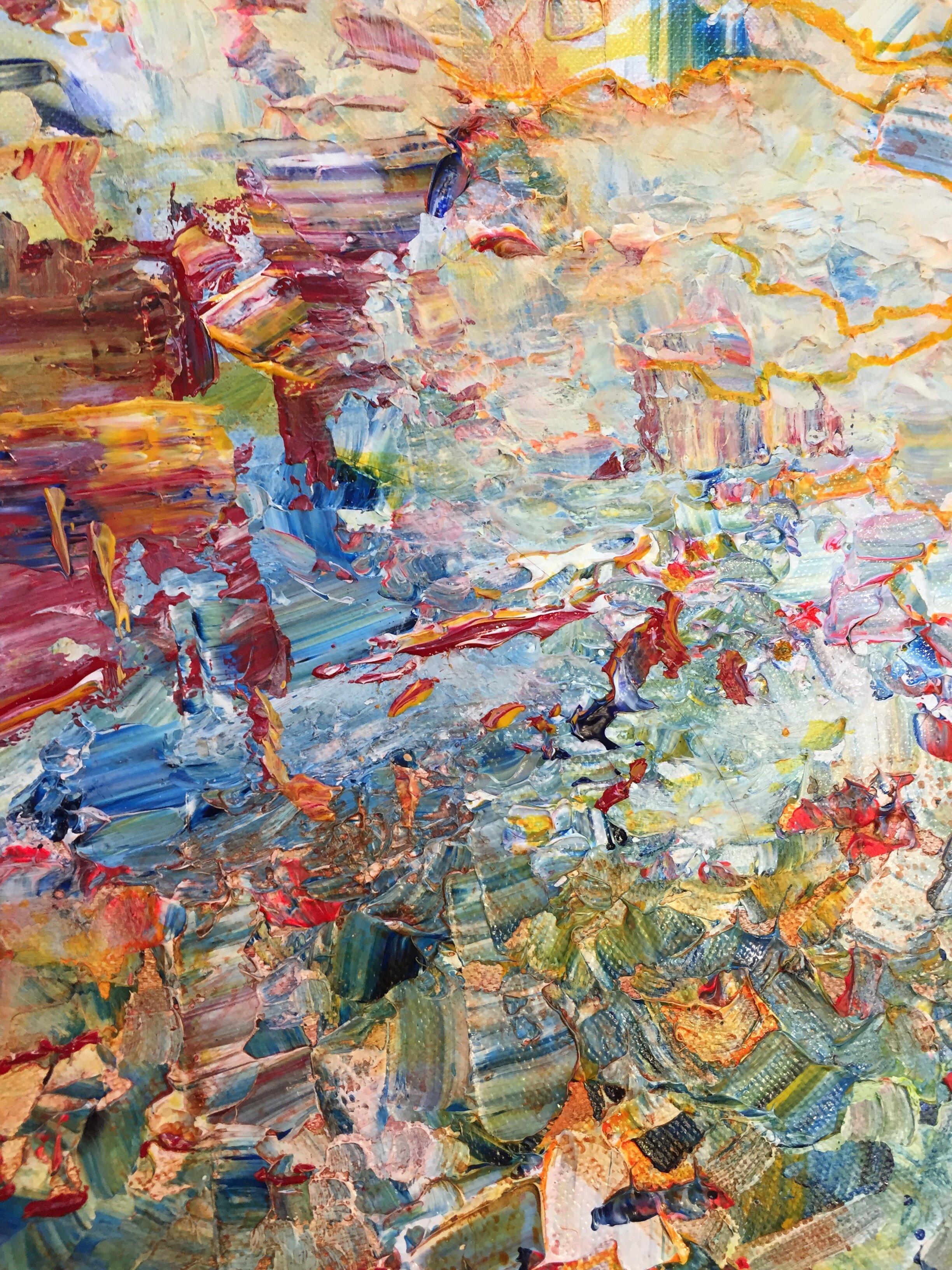My artistic split personality continues, and I’ve been working on both abstracted knife paintings and landscapes lately. It’s not hard to explain the latter: realistic landscape and floral is very comforting and comfortable to me. It lays out right in front of me all of the things I love about the world around me. When I paint a lyrical landscape with beautiful sky and lovely color, my heart feels the joy and appreciates the beauty of my subject.
BUT…the knife paintings are something else. They are like eye candy to me, they are a diversion which is delightful and colorful, and which makes me feel young again.
“Stained Glass World”, 24” x 36”, is my latest fanciful knife painting. It is loaded with thick juicy color and scribbled paint pen lines which give it more pop. This is a detail of the right hand side of the painting.
I love swiping loads of color across a big canvas, and letting the colors barely mix on a knife is so satisfying. I feel that the pure colors are glowing and peeking through my strokes, and I don’t have to worry so much about having to work to keep my colors bright. All in all, knife painting is just a wonderful side jaunt for me, a tension reliever and a way to recapture the joy of painting. Below you can see how I load my knife as I start this particular painting.
It’s quite a challenge, however, to paint layers on top of one another once they’ve begun to dry. In this particular painting, I added extra color and definition by adding lots of bright linear elements with paint pens. I didn’t specifically upload video of that part of the painting process, but you can see the paint pen work if you look for the bold yellow in the cracks in the closeup below.
Knife painted strokes and paint pen marks jostle for room in this detail of my acrylic “Stained Glass World”, 24” x 36”
Here’s the finished painting below:
“Stained Glass World,” 24” x 26” Susan D. Kennedy
If you feel stuck in realism, or word art, or, well, stuck in any particular genre…buy a painting knife and get swiping! Incidentally, if you’d like to see this painting in my ebay store, it’s here.
Also, I’ve written a short 40-page eBook on exploring abstraction in painting, full of illustrations and a full step-by-step demo. If you’d like to flip through a preview of it, you can click “look inside” on its Kindle Store page.
or look at its listing here on my website. Thanks for looking!




